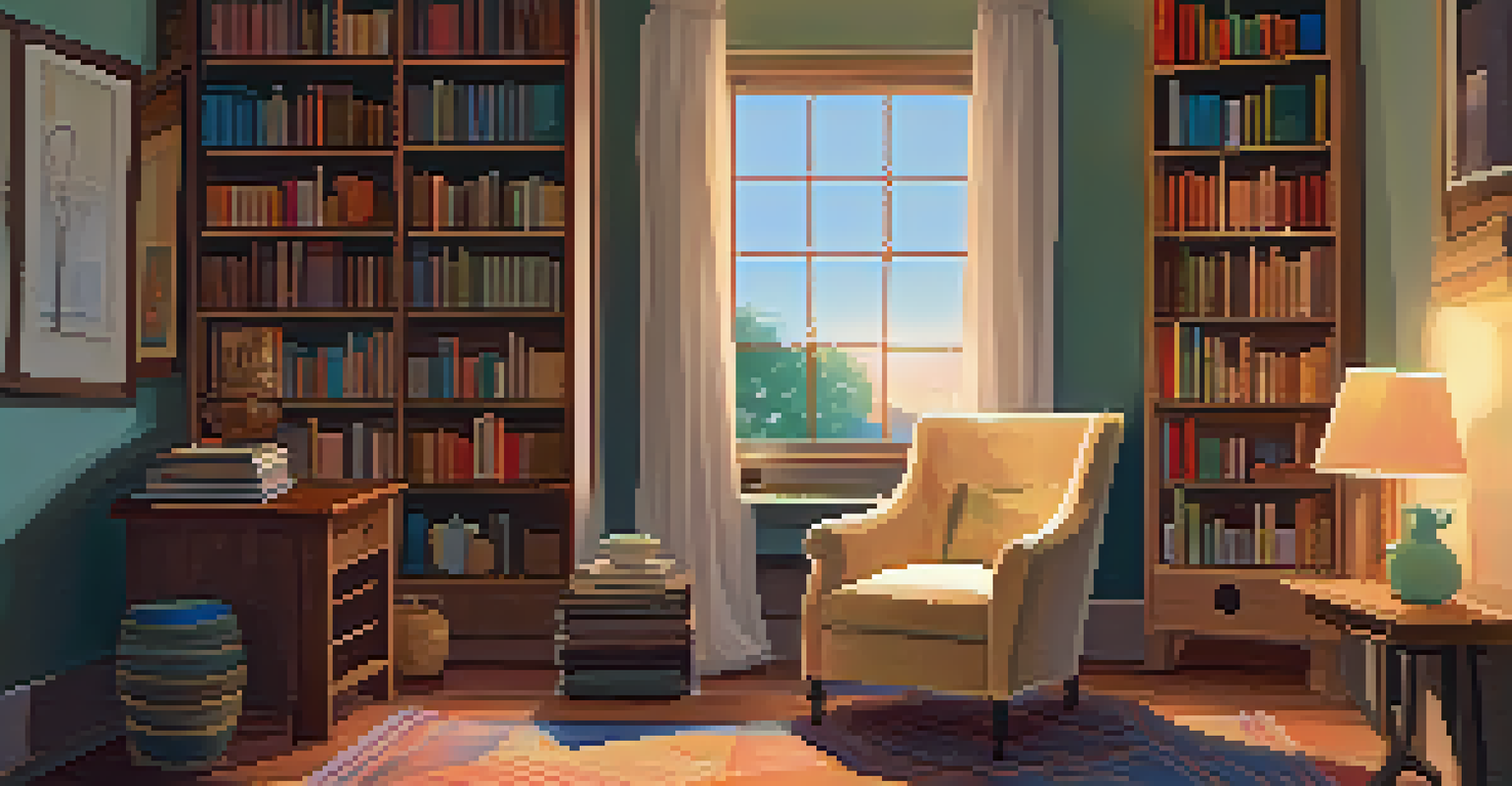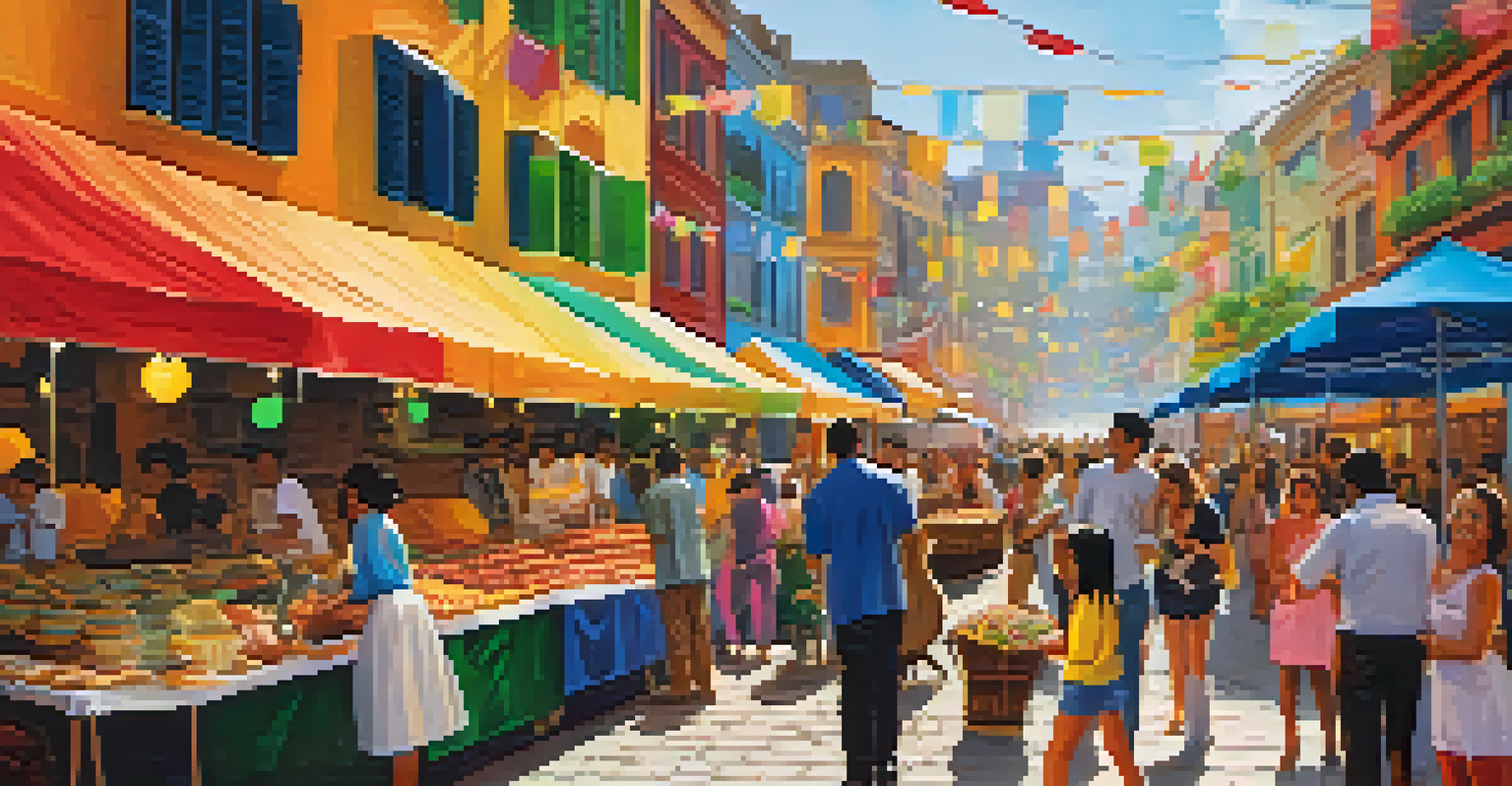Understanding Effects: How to Use Them Creatively

What Are Effects and Why Do They Matter?
Effects are tools that transform images, sounds, or videos to enhance storytelling. They can add layers of meaning, evoke emotions, or simply make content visually appealing. Understanding these tools is crucial for anyone looking to create impactful media, whether it's for a video, an audio track, or a graphic design.
The best visuals are the ones that enhance the story, not overshadow it.
For instance, think of a simple photograph. By adding a soft focus effect, you can create a dreamy atmosphere, drawing viewers into a romantic scene. Similarly, sound effects in a film can heighten suspense, making a seemingly mundane moment feel thrilling. Effects aren’t just embellishments; they are integral to your narrative.
Ultimately, mastering effects allows you to communicate your message more effectively. It’s about choosing the right tools to serve your story and connect with your audience on a deeper level.
Types of Effects: A Brief Overview
Effects can be categorized into various types, including visual effects, audio effects, and text effects. Visual effects might include filters, transitions, and overlays that enhance images or videos. Audio effects, on the other hand, can range from reverb to equalization, altering how sound is perceived.

For example, a bright color filter can make a scene feel cheerful, while a dark vignette can create a moody atmosphere. Similarly, adding reverb to a vocal track can make it sound more spacious and ethereal. Knowing these distinctions helps you choose the right effects for your desired outcome.
Effects Enhance Storytelling
Effects transform images, sounds, and videos to deepen engagement and evoke emotions in storytelling.
Ultimately, the type of effect you choose should align with your creative vision. It’s about finding the right balance between enhancing your content and maintaining its authenticity.
Creative Uses of Visual Effects
Visual effects can be a game-changer in storytelling. They can transport your audience to fantastical worlds, enhance emotions, or highlight important elements. For instance, using slow motion during a pivotal moment can emphasize the weight of an action or decision.
Sound is the vocabulary of the heart, and the right effects can make it sing.
Additionally, layering effects can create unique aesthetics. Think of a music video where vibrant colors and glitch effects blend to reflect the song’s energy. This not only captivates the viewer but also reinforces the narrative of the piece.
Experimenting with visual effects can lead to innovative results. Don’t shy away from exploring different combinations—you might stumble upon a style that resonates perfectly with your creative vision.
Harnessing Audio Effects for Storytelling
Audio effects play a crucial role in setting the tone and mood of your content. From echoing voices in a dramatic scene to brightening a cheerful song with a bit of compression, the right audio effect can significantly influence how your audience feels.
Consider a horror film where the sound of footsteps echoes ominously. This effect not only heightens tension but also immerses the audience into the experience. Similarly, layering background music with subtle sound effects enhances the overall atmosphere.
Types of Effects Matter
Understanding various types of effects, such as visual and audio, helps creators select tools that align with their creative vision.
Using audio effects creatively can make your projects stand out. Don’t hesitate to experiment; sometimes, the most unexpected effects can lead to the most engaging results.
Combining Effects for Unique Outcomes
Combining different types of effects can lead to innovative and unexpected results. For instance, pairing visual effects like motion blur with audio effects such as distortion can create a sense of chaos or urgency in your piece. This combination can effectively convey the emotions you want to evoke in your audience.
Think of a scene in an action film where everything is happening at once. The rapid visual cuts paired with intense sound effects can create a thrilling experience that keeps viewers on the edge of their seats. This interplay of effects can enhance storytelling by creating a more immersive experience.
Explore the possibilities of layering effects in your projects. The right combinations can elevate your content from ordinary to extraordinary, making your message resonate even deeper.
Tips for Using Effects Responsibly
While effects can enhance your work, it’s important to use them thoughtfully and responsibly. Overusing effects can clutter your message and distract from your content’s core purpose. Always ask yourself if an effect truly enhances the story you want to tell.
For example, a simple fade-in might be more effective than a flashy transition if you’re trying to convey a serious message. Striking the right balance is key; you want your audience to focus on the content, not the effects themselves.
Use Effects Thoughtfully
While effects can elevate content, responsible use ensures clarity and maintains focus on the core message.
Ultimately, the goal is to enhance, not overwhelm. Be intentional with your choices, and your audience will appreciate the clarity and thoughtfulness of your work.
Finding Inspiration for Creative Effects
Inspiration can come from anywhere, and observing other creators can spark your own ideas for effects. Watch films, listen to music, or browse art to see how others use effects to elevate their work. This exploration can ignite your creativity and lead to new techniques.
You might find that a particular color scheme in a painting inspires a visual effect in your video. Alternatively, the layering of sounds in a song could lead you to experiment with audio effects in your own projects. The key is to remain open to influences from various sources.

Remember, creativity often flourishes when you allow yourself to explore. Don’t hesitate to try new things; you never know what unique effect you might discover for your next project.
Conclusion: Embrace Creative Effects in Your Work
Creative effects are powerful tools that can enhance your storytelling and engage your audience. By understanding the types of effects available and how to use them effectively, you can elevate your projects and convey your message more compellingly. Embrace the opportunities that effects provide.
Whether you’re working on visual media, audio projects, or written content, the right effects can add depth and resonance to your work. Remember to experiment, combine, and use them responsibly to keep your message clear and impactful.
So, dive in and start experimenting! The world of creative effects awaits, and with each project, you have the chance to discover new ways to express your unique vision.